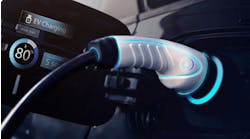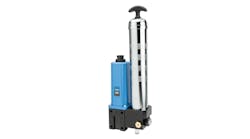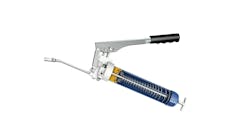Diesel engines operate by converting fuel into energy. However, not all of that energy goes into creating power. Mainly due to friction between moving engine components, some of the energy is lost to heat. Heat causes stress, wear and eventually failure of parts and components, which is why it is imperative to prevent engines from overheating.
“The purpose of the cooling system is to take heat out of the engine so that the engine operates at the proper temperatures for durability and for fuel economy,” says Jim Nachtman, product marketing director for on-highway at Navistar. Navistar is a manufacturer of commercial trucks, buses, defense vehicles and engines.
But, as simple as that may sound, cooling systems are quite complex. There are many parts and components that make up the base system, plus there are peripheral items on modern vehicles that also require temperature regulation. Add to that, the need for consistent chemistry in the cooling fluid (coolant).
To understand the function and upkeep requirements of engine cooling systems, let’s first take a look at what keeps diesel engine cooling systems operating, as well as how fleets can reduce downtime by performing proper cooling system maintenance.
Pieces of the puzzle
The cooling system is made up of several important components, including the water pump, radiator, fan and thermostat as well as hoses, pipes and belts.
- Water pump - Driven by a belt, the water pump circulates coolant throughout the engine via pipes and hoses. The coolant is pumped through the water jacket, which surrounds the cylinders. Heat is transferred from the cylinder heads and sleeves to the coolant, which then circulates back to the radiator.
- Radiator - “The radiator specifically applies to the device that takes heat out of the coolant and (ejects) that heat into the air,” Navistar’s Nachtman says. “Air flows through the grille on the front of the vehicle, it goes through the radiator which is filled with hot coolant, the heat is transferred to the air and the coolant is cooled. Then it goes back into the engine and the cycle repeats.”
- Fan - The fan sits behind the radiator and works to pull air through in order to remove heat from the coolant. It is driven by a fan clutch, which dictates when the fan is on or off. Depending on the efficiency of the cooling system, the ambient temperature, how fast the vehicle is moving and other factors, the fan may not always need to be running in order for the radiator to allow for effective cooling of the coolant.
- Thermostat - While smaller gasoline engines use only one thermostat, larger diesel engines typically have two. “Thermostats open to allow more coolant to go through if the engine is operating hot and needs to be cooled off,” Nachtman says.
On modern vehicles, cooling systems are not limited to cooling only the engine. They also serve to regulate temperature in a variety of other systems on the vehicle.
“There’s an oil cooler, so coolant regulates the oil temperature,” Nachtman says. “Coolant flows through the exhaust gas recirculation (EGR) cooler. It also flows through the EGR valve [and] the turbocharger … Certain applications may have a transmission oil cooler, or a power steering cooler - those all use coolant as well.”
Not just for cooling
While coolant is effective in removing heat from the engine and other components, it also serves a dual purpose by providing heat where needed.
Take, for instance, the heat in the cab of a vehicle. A heat exchanger (any device that takes heat from one element and transfers it to another) takes heat from the cooling system’s coolant and transfers it to the air in the HVAC system, which blows through the vents into the cab.
“Coolant is also used to warm up the DEF (diesel exhaust fluid),” Navistar’s Nachtman says. “In the winter time when it’s cold enough, DEF will freeze solid, and coolant is used to warm up and thaw the DEF in the DEF tanks.”
Another way that coolant is used for heat is in-transit heat in trailers. During colder winter months, in-transit heat systems allow hot coolant from the truck’s cooling system to be circulated through the interior of the trailer to keep the cargo from freezing. The coolant then circulates back into the truck’s engine.
“Some customers will also order shut-off valves so that coolant only flows through the in-transit heat system when they choose,” Nachtman adds.
Keeping up with cooling technology
Ever since internal combustion engines have been using water cooling systems, the basic principles of the system have remained the same. However, as demand and regulation have required, the technology used in these systems has changed in order to make them more efficient. Emission requirements set by the EPA were enforced beginning in 2007 and 2010. These requirements changed how heavy duty diesel engines operate and, in turn, how efficiently cooling systems need to function.
“Since 2007, diesel engine emission technology has changed,” says Brian Daniels, manager of powertrain and component product marketing at Detroit Diesel. “As a result, newer engines carry higher heat loads than their predecessors, which makes the efficient dissipation of heat via the cooling system more crucial than ever. Also, newer engines, including the cooling system, have more aluminum components which are more susceptible to heat stress, corrosion, electrolysis and erosion. Engine cooling systems have become more complicated and efficient to compensate.”
Detroit Diesel is an OEM of engines, axles and transmissions for Freightliner and Western Star Trucks.
But cooling systems themselves weren’t the only change that had to be made because of these new emissions requirements. The coolant running through those systems had to keep up with the higher demands as well.
“The new emission standards mandated by the EPA forced a redesign of engines that necessitated new coolant to manage these new engines,” says Colin Dilley, vice president of technology at Prestone Products Corporation. Prestone manufactures antifreeze/coolant and other vehicle maintenance products.
“Engines were running hotter, and the older silicated technologies could not handle the load,” Dilley continues. “The new coolants, which have taken over from the older silicate formulas, are typically 7 to 9 percent better at heat exchange. This allows heavy duty diesel engines to be more efficient, which lowers overall emissions.”
Since that time, developments have been made that allow diesel engines to meet those emission standards while also operating more efficiently. As the amount of DEF used has increased industry-wide, manufacturers have been able to decrease the amount of EGR flowing through the engine, Navistar’s Nachtman says.
“With that, you don’t have as much heat that needs to be taken out of the engine, because the engine is operating far more efficiently,” Nachtman says. “We’ve gone to a six-blade fan, whereas we used to be at an 11-blade fan. A six-blade fan, for example, takes about 31 horsepower less to operate when you’re in the 1,400 rpm range. That saves fuel, when the fan is on, and it significantly reduces noise. But that 31 horsepower is now available to the driver - going to the wheels - so that he has more horsepower available when he’s passing a vehicle, for example, or going up a really long grade.”
Maintenance and testing
Keeping these complex systems running smoothly may seem overwhelming, but a few basic preventative maintenance and inspection items can go a long way.
General inspection of components
Navistar’s Nachtman recommends the driver check the level of coolant in the coolant reservoir daily.
“Engines should never consume coolant, or leak coolant,” Nachtman says. “If the coolant level is low, the driver should reach out to the service provider and have the vehicle looked at.”
He adds that the engine, hoses and the ground beneath the vehicle should also be checked for wet areas that may indicate a coolant leak. Hoses should be checked for abrasion, and clamps should be kept secure and tight. Other areas to inspect include the fan belt and the fan itself, as well as the water pump.
“Look at the belt for any cracks in the rubber or any chunks missing,” Nachtman says. “As well as looking at the fan blades themselves, make sure there’s no significant chips or cracks.”
“Water pumps have what is called a weep hole,” he adds. “It’s good to look at the water pump to make sure there is no coolant leak, [which could] indicate a bearing or seal failure.”
Misconceptions with coolant
While inspecting the components is crucial, keeping up with the coolant is arguably just as - or more - important to maintain a fleet’s cooling systems.
“Antifreeze/coolant is often the most neglected fluid in a vehicle, which is surprising because some sources have pegged cooling system failures as the cause of half of all engine failures,” Prestone’s Dilley says. “Regular testing of the coolant to ensure proper nitrite, pH and EG concentration will go a long way to ensuring engines run smoothly. In addition, if fleets are mixing coolant and water onsite, it is very important to ensure they are using high-quality deionized water. Contaminants in tap water can easily throw off the balance in the cooling system or introduce foreign material that the system cannot neutralize.”
A common misconception with coolants and additives is that the same color is always compatible, even if it comes from a different source or brand. However, that is often not the case.
“Fleet service managers should know what coolants and additives are being used in each power unit, and should not rely upon coolant color to determine product,” Detroit Diesel’s Daniels says. “Because different OEMs have different coolant requirements, it’s important to refer to OEM and coolant manufacturer recommendations. It’s also important to maintain meticulous and up-to-date records on cooling system maintenance.”
He adds that fleets should always refer to OEM documentation for change intervals and cooling system maintenance procedures.
Select suitable additives
Additives can extend the life of some coolants, but Dilley says that Prestone only recommends supplemental cooling additives (SCAs) and extenders.
“SCAs protect coolant systems from corrosion, the buildup of harmful deposits and control the pH balance,” Dilley says. “SCAs replenish corrosion inhibitors and protect all cooling-system metals.”
SCAs are used for pre-charged, conventional low-silicate formula coolants which are usually pink or purple and need to be tested and charged every 25,000 miles, Dilley explains. Extenders are used for nitrite organic acid technology (NOAT) formulas, which are usually red and need to be recharged at 300,000 miles or 6,000 hours of service.
“SCAs and extenders can prolong the life of coolant,” he adds. “However, our industry fleet testing suggests that just as many systems are overcharged as are undercharged. Both are equally damaging. To maintain optimal protection, frequent testing and analytics are needed to ensure the proper chemical composition of the cooling system.”
Dilley suggests testing the coolant during every oil change.
Extending service intervals
Looking to present trends in coolant and cooling system technologies, it is easy to see what the future likely holds for these systems. The main goal is always minimal maintenance without sacrificing performance. One way to make that happen is to extend the service intervals and life of the coolant, while maintaining proper chemistry to keep the cooling system components in good working condition.
“The most dramatic change is the transition from older coolant formulas that contain nitrites to new nitrite-free extended-life formulas,” Prestone’s Dilley says. “As fleets began replacing older vehicles for ones with newer engines, the older coolant formulas (traditionally purple or red) were transitioning to new yellow or red non-2EH and nitrite-free formulas. These changes have caused significant confusion in the industry as the change from nitrite to nitrite-free coolant was not well communicated or associated with any specific color change.”
Aside from the color confusion, however, the benefits from switching to extended-life formula coolants are being seen with some companies offering replacement intervals of over 1 million miles.
“If you look at the International A26, we offer the best-in-class coolant replacement interval, and that’s 1.2 million miles in an over-the-road application,” Navistar’s Nachtman says. “The B10 life [the industry standard for measuring the life expectancy of an engine] of the engine is also 1.2 million miles. So, in theory, that would mean you would be able to run the engine its entire life with the same coolant that came from the factory.”
Nachtman adds that coolant testing still needs to be done at regular intervals to keep the correct chemistry, and an additive package may need to be added as well.
Conclusion
While diesel engine cooling systems may seem complicated, regular maintenance and inspection can be a relatively easy way to keep a fleet’s vehicles on the road and out of the shop as much as possible. Testing coolants at the recommended intervals will help maintain proper chemistry which will protect and extend the life of the cooling system, and the vehicle’s engine.




